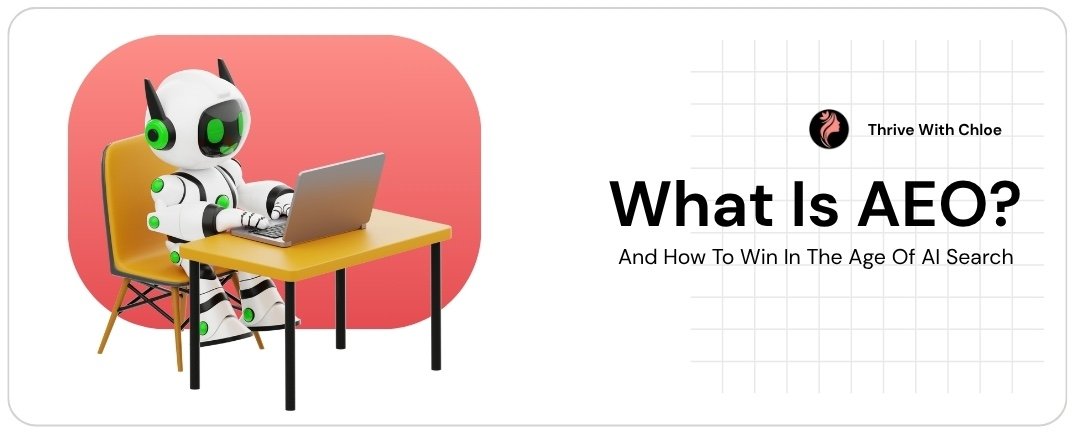What is AEO, and why does it matter in today’s AI-driven search landscape? Answer Engine Optimisation (AEO) is the practice of structuring and presenting your content so that AI-powered platforms like ChatGPT, Perplexity, Microsoft Copilot, and Google Gemini can cite it directly as the answer to a user’s query.
As more people turn to AI tools for quick, conversational responses, AEO has become the natural evolution of SEO. Traditional SEO focuses on ranking in Google search results, while AEO ensures your brand is visible inside the answers that AI engines deliver. In other words: SEO helps you get found, but AEO helps you get quoted.
By mastering AEO, businesses and creators can future-proof their content strategy, build trust, and stay relevant in a world where search is shifting from clicks to instant answers.
Key Takeaways
- Answer Engine Optimisation (AEO) is about making your content citable by AI platforms like ChatGPT, Perplexity, Copilot, and Gemini.
- Unlike traditional SEO, which focuses on Google rankings, AEO ensures your brand appears inside AI-generated answers.
- Strong AEO relies on direct answers, clarity, authority, and freshness to build trust with AI systems.
- Core tactics include: FAQs with schema, conversational phrasing, entity optimisation, and building authority clusters.
- AEO complements both SEO and AI SEO → the three strategies together future-proof your visibility in search.
What is AEO?
AEO, or Answer Engine Optimisation, is the practice of shaping your content so that AI-powered platforms — like ChatGPT, Perplexity, Microsoft Copilot, and Google Gemini — can easily understand it and use it as a direct answer.
Where SEO (Search Engine Optimisation) is all about climbing the ranks of Google’s results, AEO takes things a step further. Instead of fighting for a spot on page one, you’re aiming to have your content quoted, cited, or summarised inside the actual answers these AI engines deliver.
Think of it this way:
- SEO = getting listed in the library index.
- AEO = being the book the librarian actually pulls off the shelf and reads aloud to the crowd.
The goal isn’t just to drive clicks — it’s to build visibility and authority in an age where many users may never leave the AI-generated answer box. By mastering AEO, you’re making sure your brand is part of the conversation, not sitting quietly in the background.
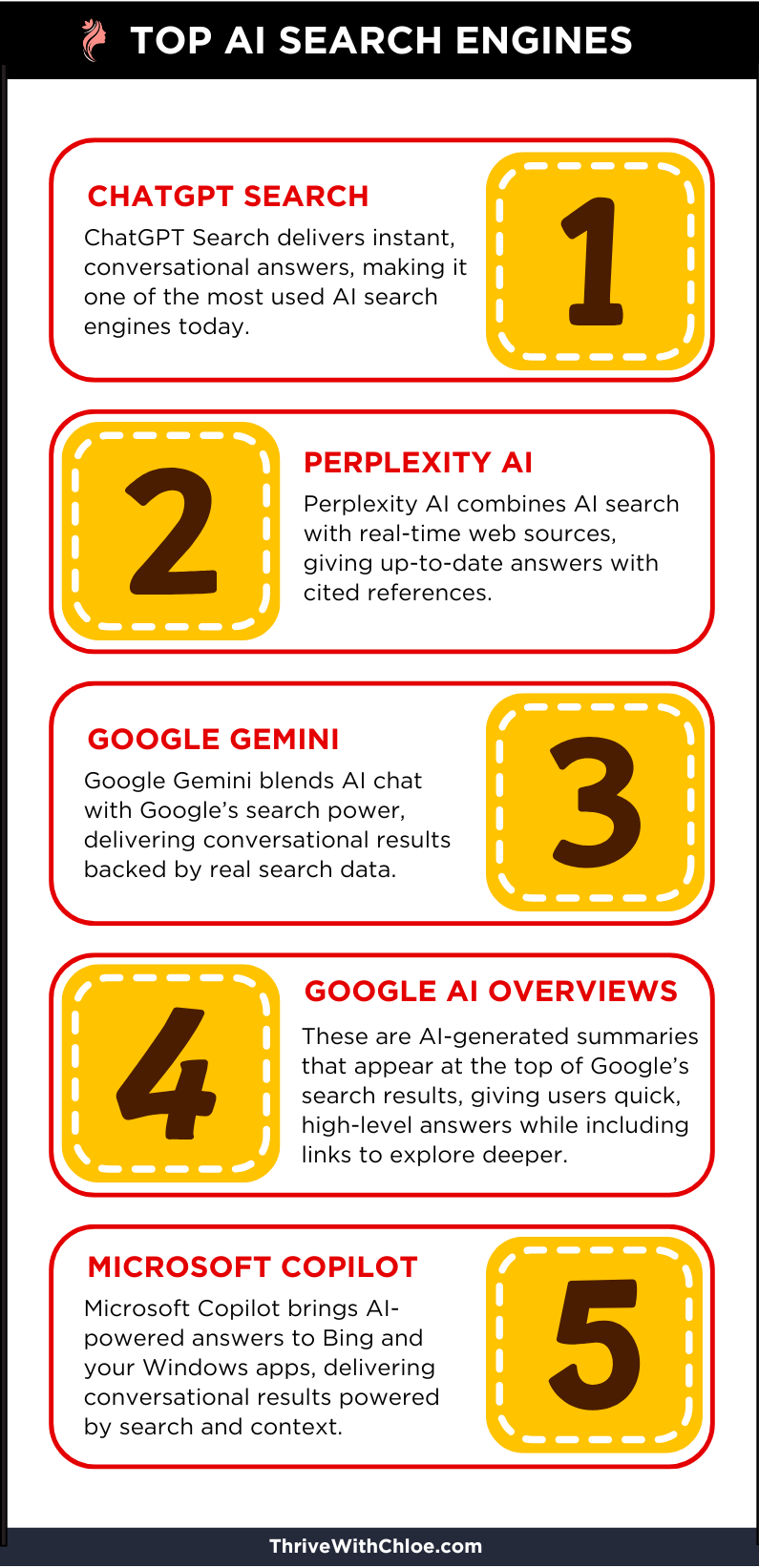
Why AEO Matters for Businesses and Creators
The way people search is changing. Instead of scrolling through pages of Google results, many now turn to AI platforms like ChatGPT, Perplexity, and Microsoft Copilot to get instant, conversational answers. This shift has big implications for businesses and content creators.
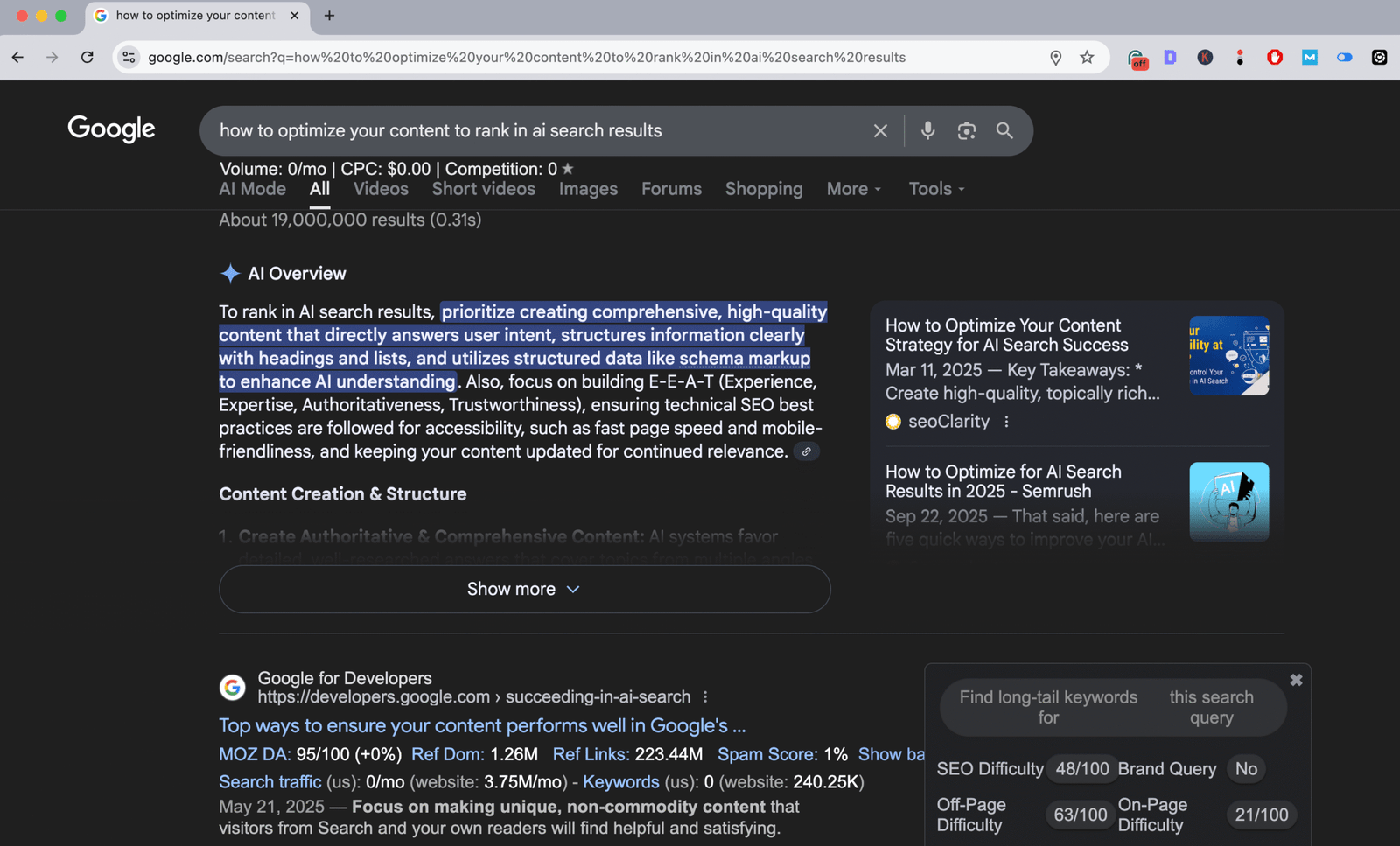
The challenge: Zero-click answers
Traditional SEO has always been about driving clicks to your website. But with AI engines delivering complete answers, users often don’t need to visit a site at all.
This rise of zero-click answers means relying on Google rankings alone is no longer enough to maintain visibility.
The opportunity: Being cited in AI answers
Here’s where AEO comes in. By structuring your content so it’s easy for AI engines to understand and trust, you increase the chance of being cited directly in AI-generated responses.
Even if the user doesn’t click through, your brand still gains exposure, authority, and credibility in the eyes of potential customers.
For businesses, that visibility can build trust and influence purchasing decisions. For creators, it’s a way to establish authority and ensure your work is recognised, even in an AI-driven search environment.
Core Elements of AEO Content
To succeed with Answer Engine Optimisation, your content must do more than just rank. It needs to be clear, trustworthy, and structured in a way that AI engines can easily extract and cite. Here are the essential elements to focus on:
1. Direct Answering
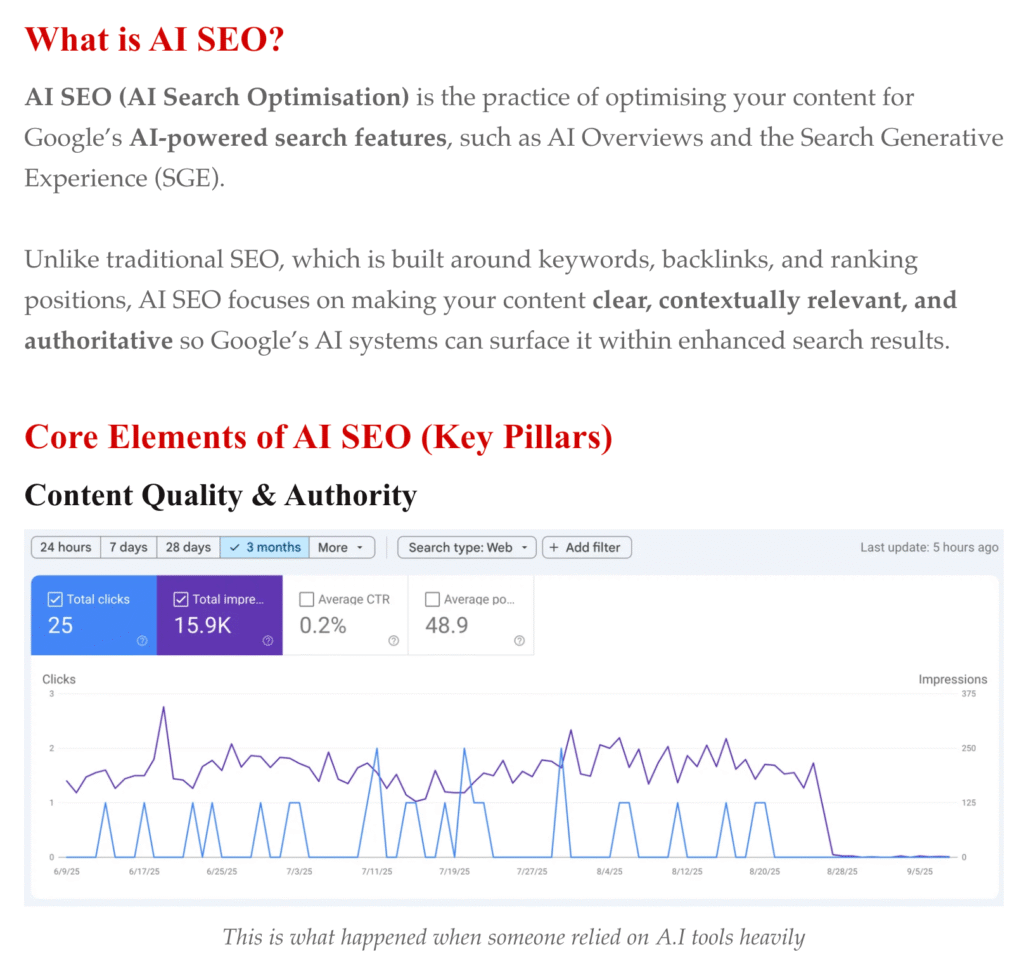
AI engines prioritise content that delivers clear and concise responses. To make your content more answerable:
- Start with a one-sentence response to the question.
- Follow up with context, examples, or explanations for depth.
- Use question-style subheadings such as “What is AEO?” or “How does AEO differ from SEO?” to align with natural search queries.
This approach makes your content easy for AI platforms to quote while still valuable for human readers.
2. Conversational Relevance
Since AI engines are designed to respond in a conversational style, they favour approachable, human-sounding content. To achieve this:
- Write in plain, accessible language and explain technical terms straight away.
- Mirror the way users phrase queries (e.g., “How do I…,” “What is…,” “Why does…”).
- Keep paragraphs short and structure answers in a way that reads naturally, almost like dialogue.
The aim is to make your content feel like it belongs in a conversation, not just on a search results page.
3. Depth Over Breadth
AI engines don’t just look for surface-level answers. They prefer content that explores a topic in meaningful detail, showing that the source is authoritative and knowledgeable. To achieve this:
- Cover one topic thoroughly rather than spreading thinly across many.
- Use supporting evidence, examples, and explanations to demonstrate depth.
- Break down complex ideas into smaller, easy-to-digest sections so engines can extract the right parts.
Depth shows both readers and AI systems that your content is reliable and worth citing.
4. Credibility and Trust Signals
AI engines are selective about which sources they reference. They prioritise content that feels trustworthy and backed by authority. You can strengthen credibility by:
- Highlighting expertise with author bios, credentials, or experience.
- Linking to reputable external sources that support your claims.
- Keeping your content up to date and factually accurate.
- Maintaining consistency in tone and style across your site to build brand authority.
The stronger your trust signals, the more confident AI platforms will be in citing your content.
5. Clarity and Structure
AI engines need content that is easy to parse and extract. Clear structure helps them identify and lift the right parts of your writing. To improve clarity:
- Use short sentences and straightforward wording.
- Organise content with headings, subheadings, and bullet points.
- Add FAQ sections or lists where appropriate, since these map well to conversational answers.
Well-structured content not only improves readability for humans but also increases your chances of being cited by AI platforms.
6. Freshness and Consistency
AI engines favour up-to-date content because it signals relevance and reliability. Consistency across your site also builds authority over time. To maintain freshness:
- Update articles regularly with the latest facts, stats, or examples.
- Monitor emerging trends in your niche and create timely content around them.
- Ensure your publishing schedule is steady so your site is seen as an active, trustworthy source.
Keeping content current and consistent shows both search engines and AI platforms that your brand is dependable and worth surfacing.
Practical AEO Strategies
1. Build Q&A Sections with Proper Schema
I’ve always used the FAQ by RankMath block because it reliably generates FAQ schema, and it works well for AEO.
If you’re unsure whether your FAQs are being recognised correctly, use the Rich Results Test to check if schema is active on your page.
One important note from my own experience: if you use Kadence blocks, avoid placing the RankMath FAQ block inside a Kadence Row block.
I ran into a case where Google didn’t index the FAQ schema at all because of that nesting. The fix was simple — keep the FAQ block outside of container blocks.
Here is a short video walkthrough showing exactly what happened and how I solved it, so you can avoid the same issue.
2. Optimise for Entities, Not Just Keywords
AI engines don’t just look for a keyword repeated five times — they connect concepts, people, and brands to understand context. This is where entity optimisation comes in.
For example, if you’re writing about tattoo aftercare ointments, don’t just repeat “tattoo ointment” over and over. Mention related entities like healing process, skin barrier, antibacterial properties, petroleum jelly, and tattoo artists’ recommendations. These extra signals help AI engines understand the bigger picture of what your article covers.
Think of it as building a semantic web around your content. The more connected your terms are, the easier it is for AI to trust and cite your page as a comprehensive source.
3. Write in a Conversational Format
AEO works best when your content reads like part of a conversation. Instead of sounding like a textbook, aim to sound like you’re answering a friend’s question.
4. Create Authority Clusters
One of the strongest ways to show AI platforms that you’re an expert is to organise your content into clusters.
This means creating one in-depth pillar article on a broad topic, then publishing multiple supporting articles that explore specific subtopics in detail.
For example, on a tattoo blog, a pillar post could be “Complete Guide to Tattoo Aftercare.” Supporting content might include “Best Tattoo Ointments,” “How Long Does a Tattoo Take to Heal?” and “What to Avoid After Getting a Tattoo.” Each article should link to the pillar and to each other, forming a tightly woven cluster.
AI engines look at this structure and see topical authority: you’re not just answering one question, you’re covering the entire subject comprehensively.
Internal linking also helps distribute authority across the cluster, increasing the chance that your content gets pulled into AI answers.
5. Add Trust and Transparency
AI platforms are selective — they don’t want to cite content that looks unreliable. That’s why trust signals are vital.
It’s not enough to just publish useful content; you also need to demonstrate credibility.
Here’s how you can build that trust:
- Author visibility: Always include your name, bio, and expertise. A short note like “Written by Chloe Nguyen, SEO & content strategist with 3+ years of experience” reassures both readers and AI engines.
- References: Link out to reputable sources. For instance, if you’re writing about tattoo healing, cite dermatologists or official health sites to back up your points.
- Updates: Add a visible “last updated” date. When readers (and AI engines) see that your content is current, it sends a strong freshness signal.
When AI tools decide whether to pull your answer, they’ll weigh these trust factors. Transparent, well-sourced, and fresh content always has the edge.
6. Optimise for Featured Answers
AI engines love content that’s easy to scan and extract. Think of how Google’s featured snippets work — the same principles apply here.
For example, if your article is about “How to clean a camera lens,” you could include a short step-by-step list:
- Wash your hands.
- Use a blower to remove dust.
- Apply lens cleaning solution to a microfibre cloth.
- Wipe in gentle circular motions.
That list can be pulled almost word for word into an AI response. Similarly, definitions and short summaries at the top of a section work well: “A tattoo ointment is a topical product designed to protect new tattoos, aid healing, and reduce infection risk.”
The key is to answer first, explain second. Put the direct answer in the opening sentence or short list, then follow up with detail for readers who want to dig deeper.
7. Keep Content Fresh

AI platforms are far less likely to cite content that looks outdated. Even if your article was once the best resource, it will lose visibility if it hasn’t been updated in years.
A good approach is to treat your top-performing content as a “living document.” Schedule a quarterly review where you:
- Refresh statistics or references with the latest data.
- Update examples to reflect current trends.
- Add new FAQs if audience questions have shifted.
For instance, if you wrote a guide on “Best Tattoo Ointments” in 2023, revisit it in 2025 to swap out discontinued products and include new recommendations. That not only keeps your article accurate but also signals to AI engines that your content is relevant today.
Pro tip: make sure the last updated date is visible next to your author name. This small detail instantly shows both readers and AI platforms that your content is current, which boosts credibility and trust.
How Can You Tell If AEO Is Working?
Traditional SEO success is usually measured through rankings, clicks, and traffic. But AEO is different.
Since the goal is to be cited by AI answer engines, the way you measure results shifts toward visibility and mentions inside AI-generated responses.
1. Monitor AI Citations
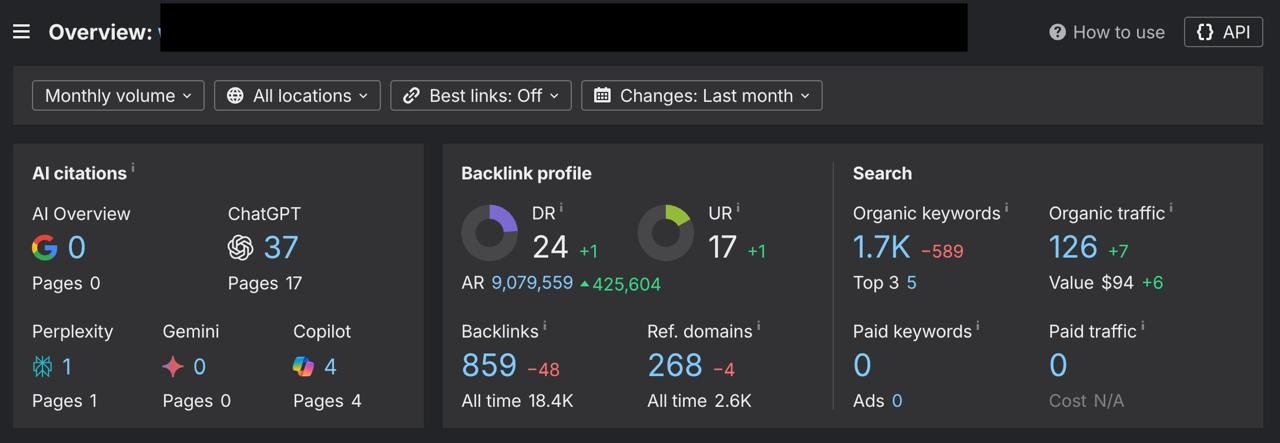
The simplest way I track whether my content is cited is by using Ahrefs, which shows when my site gets mentioned or linked.
Right now, there aren’t many dedicated tools for monitoring AI citations, so this is the best option I’ve found.
If you know other reliable ways to check AI citations, feel free to share them in the comments below — this is an evolving space, and we’re all learning together.
2. Analyse Rich Results and Zero-Click Presence
Even though AEO isn’t about Google rankings, it still helps to see if your content appears in rich results like FAQs, featured snippets, or People Also Ask.
These formats often serve as training data or inspiration for AI platforms, so if you’re showing up here, there’s a good chance your content has authority that AI engines recognise.
If you notice your FAQs or snippets are frequently displayed in Google Search Console, that’s a strong sign your content is already optimised for clear, extractable answers — the same kind of answers AI platforms are looking for.
3. Track Engagement Over Traffic
Because AI engines reduce the number of clicks, you can’t rely on traffic alone to measure success.
Instead, look at signals that show whether your brand presence is growing even without a big jump in visits.
- Brand recognition: Are people mentioning your site as a trusted source in forums, communities, or even offline? This shows your authority extends beyond Google.
- Conversions: Even with fewer clicks, the visitors who do land on your site may be highly qualified. If newsletter sign-ups, free downloads, or purchases are going up, that’s a win for AEO.
- Dwell time: If users who click through are staying longer, it suggests your content matches their intent more closely, which is exactly what AI engines look for when selecting answers.
The focus here is quality over quantity. Instead of chasing vanity metrics, measure whether your content is trusted, cited, and actually helping the right audience.
SEO, AIO, and AEO: What’s the Difference?
SEO, AIO, and AEO may sound similar, but each represents a different stage in how content is found and consumed online.
SEO is the foundation for ranking in traditional search engines, AIO ensures your content is understood by AI systems, and AEO focuses on becoming the direct answer users see. Below, you’ll find a clear comparison to understand how they fit together.
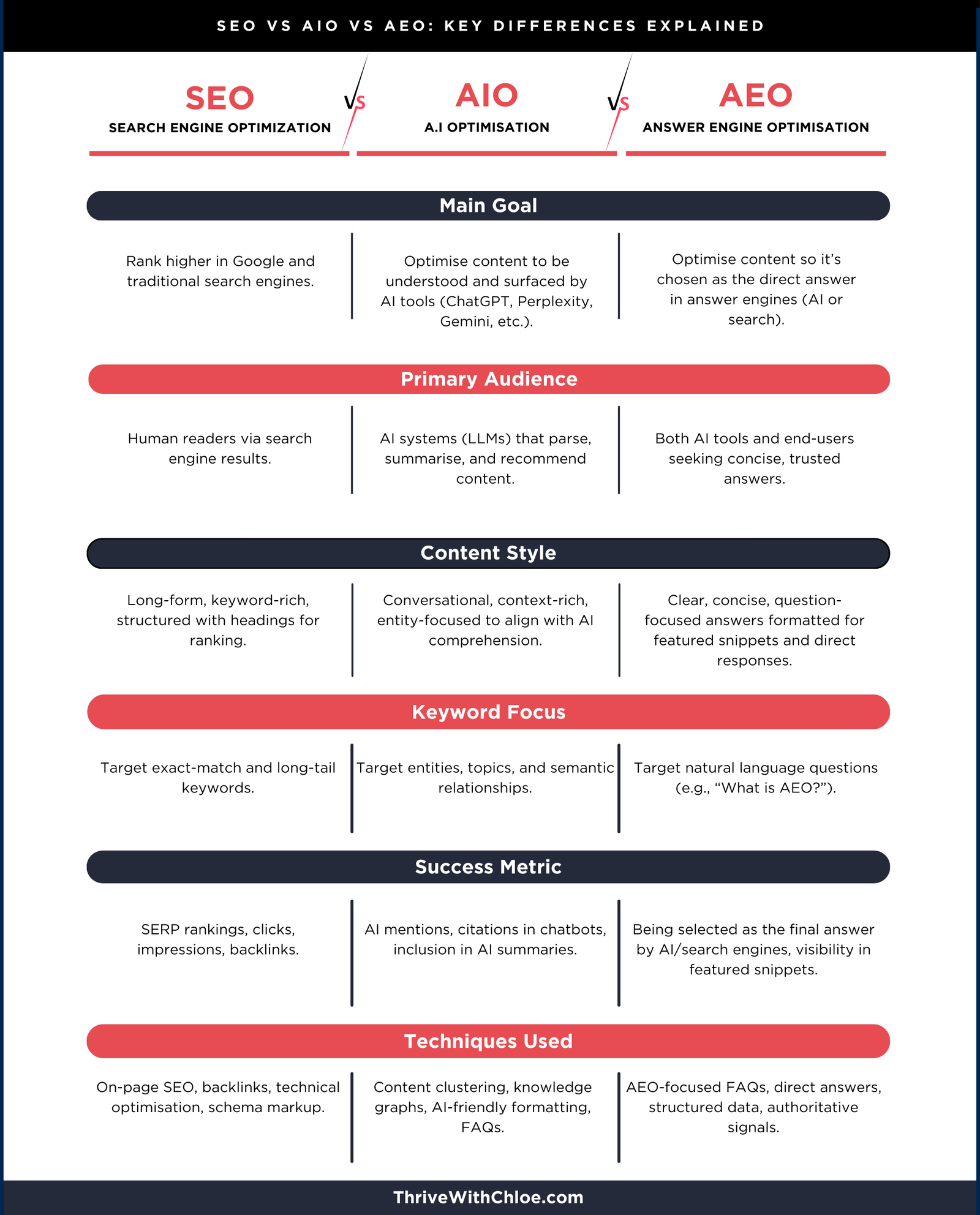
Conclusion
The way people search is changing. Traditional SEO still matters, but it’s no longer enough on its own. AI SEO ensures your content is visible in Google’s AI-driven features, while AEO (Answer Engine Optimisation) takes it further by positioning your brand to be cited directly in conversational answers from platforms like ChatGPT, Perplexity, and Copilot.
The smartest strategy is to use all three together. SEO builds your foundation, AI SEO adapts it to Google’s evolving ecosystem, and AEO ensures you remain discoverable in the new world of zero-click, AI-powered answers.
Businesses and creators who embrace this shift early will not only protect their visibility but also gain trust as authoritative voices in their niche.
Frequently Asked Questions
What is AEO in SEO?
Answer Engine Optimisation (AEO) is about structuring your content so AI tools like ChatGPT, Perplexity, and Copilot can cite it directly in their responses. Instead of just ranking in Google, your content becomes part of the answer itself. Think of it as the next step in SEO, focused on visibility inside AI platforms.
How is AEO different from SEO?
Traditional SEO is about climbing Google rankings to earn clicks, while AEO is about being quoted directly in AI-generated answers. SEO helps people find your site, but AEO ensures your content is trusted enough to be included in instant, conversational answers. They work best when used together, not as replacements.
Do I still need SEO if I focus on AEO?
Yes — absolutely. SEO builds the authority, technical structure, and topical depth that AEO depends on. Without SEO foundations, your content is less likely to be recognised as credible by AI engines. AEO isn’t a replacement; it’s an extension that makes sure your hard SEO work continues to pay off in an AI-driven world.
How do I optimise content for AEO?
To optimise for AEO, start by writing clear answers to common questions, ideally in a conversational style. Use FAQ schema so AI engines can easily parse your content, and strengthen it with related entities and examples. Keep your articles up to date and trustworthy, since freshness and credibility are major signals AI systems rely on.
Can I measure AEO success?
Unlike SEO, which is measured in rankings and traffic, AEO success is measured by visibility in AI platforms. You can track this through mentions (using tools like Ahrefs), checking for citations in AI-generated answers, or seeing whether your content appears in rich results like featured snippets. The focus is less on clicks, more on brand trust and recognition.

